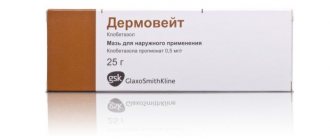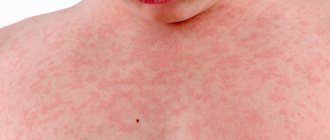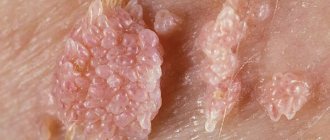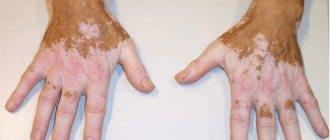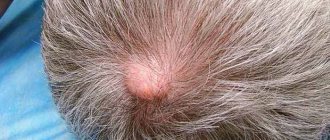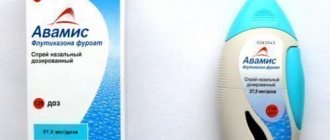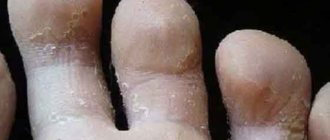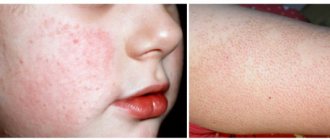In the complex therapy of psoriasis, doctors use not only medications (ointments, creams, tablets), but also various physical procedures, among which baths with various additives are especially popular. The disease cannot be completely cured, but with such means it is possible to significantly alleviate its course and ensure long-term remission, which has a beneficial effect on the quality of life of patients.
When are baths indicated and contraindicated?
As is known, psoriasis has several degrees of activity. The most favorable time for using baths is the period of remission or subsiding exacerbation. In the stationary stage, when elements of hyperkeratotic processes are clearly expressed on the skin, any procedures should be agreed with a doctor. As the disease progresses, that is, during the appearance of a red rim around the plaques, when elements spread throughout the skin, water procedures should be treated with extreme caution so as not to cause an even greater exacerbation. If a specialist recommends avoiding baths as the disease progresses, then it is necessary to postpone their use until the inflammatory phenomena subside. In case of severe deterioration of the disease - erythroderma, all baths are absolutely contraindicated.
Any person suffering from a skin disease without an exacerbation, who has no contraindications to the use of the procedure, can use baths for psoriasis at home. However, there are limitations, which include:
- any cancerous processes on the skin;
- acute infectious diseases;
- severe cardiovascular disorders;
- any forms of tuberculosis;
- pregnancy;
- general serious condition of the patient;
- severe renal or liver failure.
Each of the baths that is used in the psoriatic process has its own individual limitations associated with intolerance to the ingredients used for the procedure. Focal plaque forms of the disease are more easily corrected with baths, while total skin lesions require longer courses of therapy with water sessions.
Contraindications
Procedures using pharmaceutical products are, as a rule, absolutely safe, but even the most harmless item can cause harm if handled incorrectly. Therefore, before starting treatment, you should read the instructions, and if you have serious illnesses, consult a doctor.
Since sea salt is somewhat of a stimulant, there are a number of restrictions on its use. These include the presence of conditions such as:
WHAT DOCTORS SAY ABOUT PSORIASIS
Doctor of Medical Sciences, Professor Akchurin R.V. Work experience in the field of psoriasis treatment - 12 years:
Psoriasis shortens a person's life by 20-30%
Psoriasis is one of the most dangerous skin diseases today.
In addition to the fact that it disfigures people’s appearance, making their lives much less comfortable, it also leads to various kinds of complications. As a result, the disease reduces a person’s life expectancy by 20-30%, that is, patients with psoriasis on average live 15-20 years less.
Together with the Dermatology Center, we received a product that helps in 93% of cases, completely eliminating the manifestation of psoriasis and restoring the skin...
To learn more
- oncology;
- cardiovascular pathologies;
- periodic or constant increase in blood pressure;
- exacerbation of chronic diseases;
- circulatory disorders;
- hypothyroidism;
- glaucoma in the progressive stage;
- active pulmonary tuberculosis;
- thrombophlebitis;
- pregnancy (especially 2nd trimester).
In most cases, these restrictions apply to a type of treatment such as salt baths. Less aggressive effects (lotions, compresses) may be permitted by the attending physician after consultation.
Basic rules for using baths
There are specific recommendations that are suitable when using any water procedures. Treatment of psoriasis with baths implies a comfortable stay for the patient during the therapeutic session, and also limits the time period of skin contact with water. General rules include the following nuances:
- temperature: minimum 33, maximum 37.5 degrees;
- a shower is required before the bath;
- the maximum duration of one session is half an hour;
- low-calorie diets are not compatible with baths - they cannot be taken on an empty stomach;
- the optimal period for a water session is an hour and a half after eating;
- the ideal frequency is 3 times a week;
- water causes dry skin - an oil moisturizer will not hurt after the procedure.
Too high a temperature will not ensure a comfortable stay for the patient, and the load on the cardiovascular system will increase. Therefore, the older the person, the colder the water should be. At the age of 55 years and older, the optimal temperature is 32 or 33 degrees. In youth, when metabolic processes are intense, the temperature can be increased even to 40 degrees, and the residence time is better reduced to 20 minutes. For a shower, a neutral gel is desirable that cleanses the skin, but strictly without a washcloth, which causes irritation of psoriatic plaques. If the procedures are well tolerated, the frequency can be increased to 7 times a week, but this may result in excessive drying of the skin.
Spa treatment: radon and hydrogen sulfide water
In sanatoriums, patients with psoriasis are offered a course of radon baths. These procedures are famous for their powerful therapeutic effect. Radon tones the skin and activates the immune system to fight skin diseases.
At one time you will need 80-100 ml of concentrate. Temperature no more than 38 degrees. Time spent in medicinal water is 10-15 minutes. Duration of therapy – up to 10 sessions.
For plaques, therapeutic baths with hydrogen sulfide help. The healing solution normalizes metabolic processes, saturates the skin with essential substances and promotes long-term remission.
Salt baths
Sea salt baths for psoriasis are an excellent inexpensive method that improves the course of the disease. The main advantages of this therapy:
- salt has a keratolytic effect, which accelerates the resolution of plaques;
- the exfoliating effect is visible after the first procedure;
- easy availability of ingredients - bath salts can be bought at any large store;
- low degree of allergies;
- When taking morning baths with salt for psoriasis, the procedure has a tonic effect on a person.
The downside of salt procedures is the possibility of increased itching, especially during the first procedures. Together with tap water, especially with increased hardness, dry skin increases significantly. If there is bleeding from psoriatic plaques after removing hyperkeratotic masses (“scaly”), the irritating effect of salt with unpleasant pain syndrome is possible.
Salt baths for psoriasis at home are very easy to prepare. The ratio of sodium chloride and water is 1:50. The standard procedure, so that the liquid completely covers the body, takes no more than 2.5 kg of salt. You cannot pour it all into prepared water. It must first be dissolved in hot water, at least 65 degrees. Then add this small volume along with salt into the prepared bath, stirring thoroughly.
The duration of the procedure is from 15 minutes. Frequency: at least twice a week. With regular use, salt baths for psoriasis already after 6 sessions give a pronounced positive result. They have no special contraindications; only general restrictions apply. Sea salt is low-allergenic, so even if you are intolerant to herbal baths, it can be used without fear.
Properties of sea salt
The healing properties of sea salt make it a sought-after traditional medicine in the treatment of many diseases. Unlike table water, it contains not only sodium chloride, but a lot of useful components. The beneficial properties of the product are possible thanks to the following elements in the composition:
- magnesium;
- iodine;
- calcium;
- iron;
- selenium.
The product is used in the treatment of various internal organs and body systems. Sea salt for psoriasis is effective due to its positive effect on the skin. Iodine, iron, selenium, and other elements have wound-healing, anti-inflammatory, and antiseptic effects.
Baths with magnesium sulfate
If we consider all therapeutic baths for psoriasis at home, then magnesia seems to be the most powerful ingredient in these procedures. The substance is a medicinal product, therefore its uncontrolled use is absolutely unacceptable. The main advantages of a magnesium bath for psoriasis:
- swelling and inflammation from plaques are quickly relieved;
- itching and bleeding are sharply reduced;
- Just 1 session per month is enough;
- a very strong remedy with rapid improvement of the psoriatic process;
- an excellent way to improve the condition of all affected skin in one procedure;
- has a moderate antibacterial effect, which has a beneficial effect on acne.
Despite its many advantages, this bath has a number of disadvantages. The main ones are a sharp increase in kidney activity, as well as the possibility of magnesium absorption through the skin. This creates the preconditions for exacerbation of cardiac pathology, as well as increased renal failure. The procedure cannot be performed if you have any cardiovascular diseases, especially after a heart attack. It is not advisable to take a bath on a working day, since after it the diuretic and laxative effect persists for 8 hours.
The dose of magnesia per procedure is 1 kg per 20 liters of water. You need to dissolve gradually, one 100-gram sachet at a time. If you pour the entire mass of magnesium sulfate powder into water, it may crystallize and incompletely dissolve. Frequency: maximum once every 30 days, optimally once every 2 months. Before taking such baths, you should first consult your doctor.
Turpentine baths
One of the most controversial remedies for psoriasis is turpentine (turpentine oil). On the one hand, it irritates the skin, which is extremely undesirable in hyperkeratotic processes. On the other hand, it increases the local temperature, which sharply accelerates the resorption of plaques due to the activation of skin metabolism. Reviews of turpentine baths for psoriasis are equally contradictory, since if the process worsens, even after the first procedure, they cannot be continued to be used. Those patients who used turpentine oil correctly report an excellent resorption effect. The main advantages of turpentine baths:
- a pronounced resorption effect - in this indicator the procedure surpasses all other therapeutic water sessions;
- increase in local temperature;
- high antiseptic activity - can be used when psoriasis is combined with secondary purulent complications from hormonal therapy;
- antihypertensive effect - allowed in patients with hypertension.
Only purified turpentine oil is suitable for bathing. It is quite difficult to buy, since stores most often only have technical turpentine. It is produced by pharmaceutical companies and can be ordered at a pharmacy. Turpentine baths for psoriasis are allowed only in the stage of remission, or during a subsiding exacerbation. If there is progression of the disease, and especially if plaques have spread to most of the skin, such procedures are not used. A bath greatly reduces blood pressure, so if you are prone to hypotension or collapsed states, it is better to avoid turpentine.
You need to start your first bath with a small dose of turpentine oil. To begin with, no more than 25 ml of turpentine per 10 liters, then, if tolerated, increase the volume to 200 ml by the fifth treatment session. Frequency - up to 3 times a week, maximum number of baths per course of treatment - 15 procedures. The duration of the session is no more than 25 minutes.
The substance is quite irritating to the genital mucosa. It is enough to lubricate these areas with any greasy cream to prevent discomfort. In case of any exacerbation of psoriasis, baths must be stopped immediately, as erythroderma, a severe spread of the disease, may develop.
Soda baths
Baths with soda for psoriasis can be considered optimal for most patients. Sodium bicarbonate is often found in any home, which makes it easier to find ingredients for the water procedure. But besides this, a bath with soda for psoriasis has the following advantages:
- mild effect - does not irritate the skin;
- excellent softening and exfoliating effect;
- can be used in the progressive stage of the disease on the recommendation of a specialist;
- daily use is allowed;
- blood flow in the area of plaques increases, which accelerates their resorption.
Soda is a safe and low-allergenic product that extremely rarely causes unwanted reactions in the form of exacerbation of the disease. Baths for psoriasis using sodium bicarbonate do not have any serious disadvantages, only the therapeutic effect may not always be too pronounced. To enhance it, you can use soda wraps on the most problematic areas of the skin.
Preparing a bath is simple - about 250 grams of powder per bath. The frequency of therapy sessions is 4 times a week, daily use is possible. Efficiency is monitored after 5 procedures. If there is no result, or the disease activity increases, a consultation with a dermatologist is necessary. There are no special contraindications, but if you are individually intolerant to sodium bicarbonate, you should refrain from the procedures.
At home
Some procedures can be performed not only in medical institutions, but also at home. It is allowed to use baths:
- Salt - pour 1 kilogram of salt into a small volume of hot water, stir and add to the prepared bath.
- Soda - for a regular 200 liter bath you will need 1 package of soda with a volume of 250 grams. The powder is dissolved in a small amount of warm water, and the resulting mixture is poured into the bath.
- Coniferous – 100 milliliters of natural pine needle extract are dissolved in 250 milliliters of hot water and added to the bath.
- Herbal with sage, chamomile, string, celandine - 100 grams of plant material is poured into 1 liter of cool water and boiled over low heat for about 60 minutes. The resulting decoction is infused for 24 hours, then filtered and taken in a bath.
- Starch - reduce itching, soften and soothe the skin. 500 grams of starch are dissolved in cold water (200 milliliters) and poured into the bath. The procedure can last up to 20 minutes. The course of therapy lasts 14 days, sessions are carried out every other day.
- Mustard seeds - normalize blood circulation and have an antiseptic effect. The dry powder is dissolved in 250 milliliters of warm water to the consistency of liquid sour cream and added to the bath. The duration of the session is 15-20 minutes, after which patients take a shower and wrap themselves in a robe or blanket for 1 hour.
- Oatmeal – relieve inflammation, relieve itching, reduce psoriatic formations. To prepare a bath, pour oatmeal with water and boil. Add a little olive oil to the cooled porridge and pour the resulting mass into the bath.
Baths for exacerbation of psoriasis
Not all water procedures are contraindicated during the progression of the disease. If there is no erythroderma, but only a red rim around the plaques, then the following types of baths can be used:
- oatmeal;
- tar;
- starch;
- corn.
There is no single method of preparing them, since the effect on the skin during an exacerbation must be carried out in the most gentle manner possible. Oatmeal baths for psoriasis have a pronounced anti-inflammatory effect, promote exfoliation and relieve itching. For water procedures, oatmeal is used. It is dissolved at a ratio of 1:5. The result is a viscous warm substance into which the body is completely immersed for 20 minutes. The frequency of procedures during exacerbation is daily. The course of treatment is up to 7 sessions. Corn and starch baths for psoriasis are prepared in the same way. The thicker the substance, the more pronounced the anti-inflammatory and antipruritic effect.
Tar baths for psoriasis do not have enveloping and healing properties, but give a pronounced anti-inflammatory result. Birch tar should be used with caution as it can cause skin irritation in sensitive people. But thanks to the antiseptic properties of the substances, baths will help with pustular processes that accompany hormonal and cytostatic therapy for psoriasis.
Tar baths are prepared at the rate of 20 ml of the drug per 10 liters of water. Frequency of use – 2 times a week, session duration – 15-17 minutes, duration of the therapeutic course – 7-10 procedures. After the first bath, a slight progression of the disease is possible, which does not require discontinuation of the use of tar. This is a normal reaction due to the irritating effect of the drug.
Use of salt vapor
An alternative to compresses is to use its vapors. To do this, the salt must be heated in a hot frying pan. Pour in a small amount of crystals, hold for about 5 minutes, stirring constantly. Pour hot salt into a compress bag (you can sew it yourself from thick denim or other fabric). Apply to the source of inflammation for an hour.
The vapors emanating from hot salt have a beneficial effect on the skin. The main effects are:
- antiseptic;
- wound healing;
- restorative.
Painful sensations in the area of plaques and the formation of wounds are associated with excessively intense formation of crusts. They crack, ooze, and cause irritation. Using salt vapor is a simple but effective way to facilitate skin regeneration.
Herbal baths
Many plants can have a beneficial effect on psoriatic rashes. Herbal baths for psoriasis at home are used with the following ingredients:
- celandine;
- in succession;
- chamomile;
- coltsfoot;
- sage.
In all cases, a fresh plant is not used. A decoction is first made from dry raw materials, which is added hot to the bath water. It is better to purchase plant materials in pharmacies, or collect and dry them yourself.
Herbal baths for psoriasis have the following effects:
- relieve active inflammation;
- heal microcracks in the skin;
- eliminate itching;
- improve blood flow in the subcutaneous tissue;
- reduce adverse reactions of hormonal ointments.
Only a doctor can decide whether it is possible to take a bath with celandine to treat psoriasis, since the plant can irritate the sensitive skin around the plaques. The ratio of decoction to water is 1:7. The duration of the procedure is 20-25 minutes, the frequency is 3 times a week. The course is individual, sometimes long, up to 3 months. Baths with herbs for psoriasis are well tolerated, but due to the use of natural raw materials they can cause allergic reactions. If you are prone to them, it is better to use other, less allergenic water procedures. If there is a severe exacerbation of a bath with celandine for psoriasis, it is better not to use it, as the plant has irritating properties.
Thus, a variety of baths help effectively combat psoriatic rashes. It is better to make a decision about using a water procedure with the treating dermatovenerologist, since their incorrect use will lead to an exacerbation of the disease. Selecting the most effective bath recipes for psoriasis can only be done experimentally, since it is impossible to predict in advance the effectiveness of water procedures. Regular attempts to use various baths or their combinations will lead to a positive result - the skin will cleanse and itching will disappear for many years.
Reviews
I have suffered from psoriasis since childhood. But this winter the aggravation became especially severe. The plaques have spread throughout the body. Applying cream is inconvenient, so I tried soda baths. Relief came almost immediately, the painful itching subsided, and a month later the plaques began to dissolve. The bath is very comfortable, I took it twice a day, morning and evening. I don't have a lot of finances, but soda baths were very cheap. I was delighted with these procedures! Anna, 31 years old.
We were going to the beach with friends; we urgently needed to correct the situation with our skin. I used the most powerful known remedy - a magnesium bath. Additionally, I drank a small sachet of the substance internally. The effect is wonderful, the plaques have faded a lot, and I have lost a little weight, which has had a beneficial effect on my figure. One minus - the diarrhea continued for almost a day, but the communication on the beach was amazing. Oleg, 26 years old.
I have a long history of psoriasis, but I noticed that relief came after swimming in the sea. For the second year now I haven’t been able to get to the southern regions, so I decided to buy salt and make sea water at home. Although I have hypertension, sea salt baths did not increase my blood pressure. I took them twice a week for 30 minutes against the background of antihypertensive drugs. After the bath I lubricated my skin with salicylic ointment. The effect is excellent, the plaques have resolved, the itching has completely gone away after a month of using water treatments. Antonina Aleksandrovna, 63 years old.



